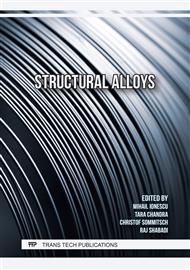p.37
p.47
p.53
p.59
p.65
p.73
p.79
p.85
p.91
Constitutive Model and Impact Induced Fragmentation of W-Zr Alloy
Abstract:
In this paper, two types of W-Zr alloy with different proportions were prepared. The dynamic and quasi-static compression mechanical properties of Zr-25%W alloy and Zr-50%W alloy at various strain rates were obtained. The results showed that the tungsten component could improve the mechanical strength of the alloy, while the zirconium component could significantly improve the plasticity of the alloy. The JC constitutive models of two types of W-Zr alloys and the KHL constitutive model of Zr-25%W alloy were proposed. The fitting parameters of JC model and KHL model were determined by the dynamic and quad-static compression tests. Dynamic impact tests of two types of W-Zr alloys were carried out in argon atmosphere at various velocities. The power law distribution theory for brittle materials could also describe the high-speed impact of W-Zr alloy.
Info:
Periodical:
Pages:
65-71
Citation:
Online since:
December 2023
Authors:
Price:
Сopyright:
© 2023 Trans Tech Publications Ltd. All Rights Reserved
Share:
Citation:



